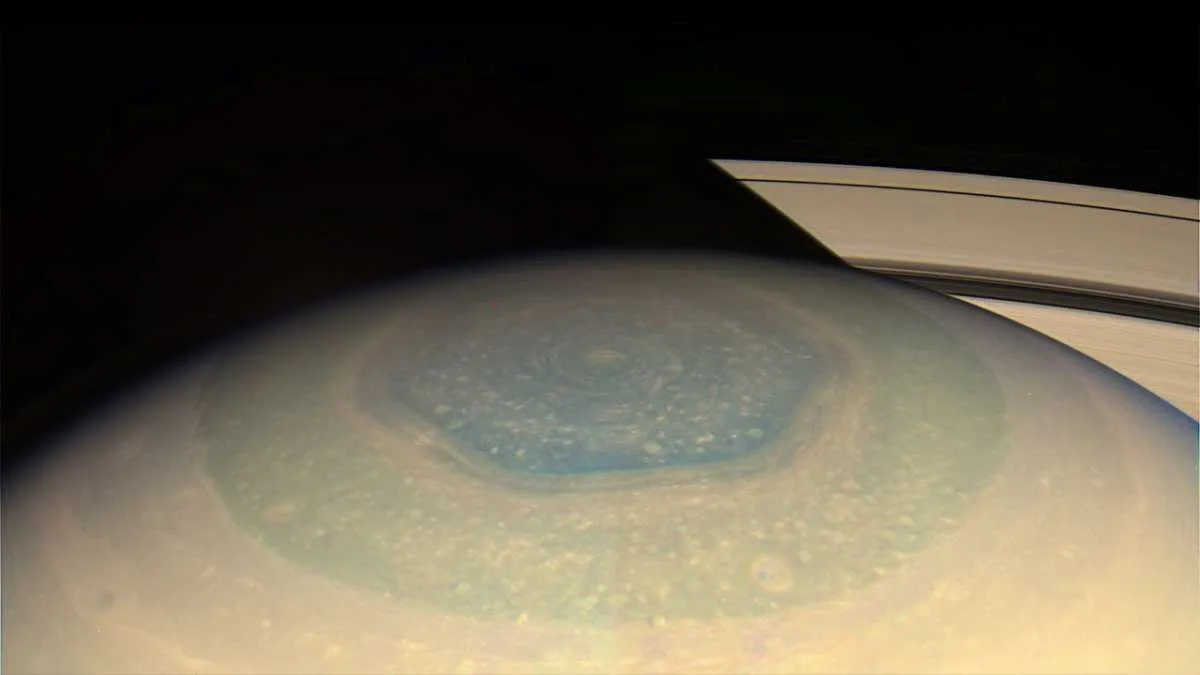
On Friday 15 September 2017 the Cassini spacecraft will end its mission by burning up in the atmosphere of Saturn. We look back as some of the amazing photographs and images taken by the instruments on the probe.
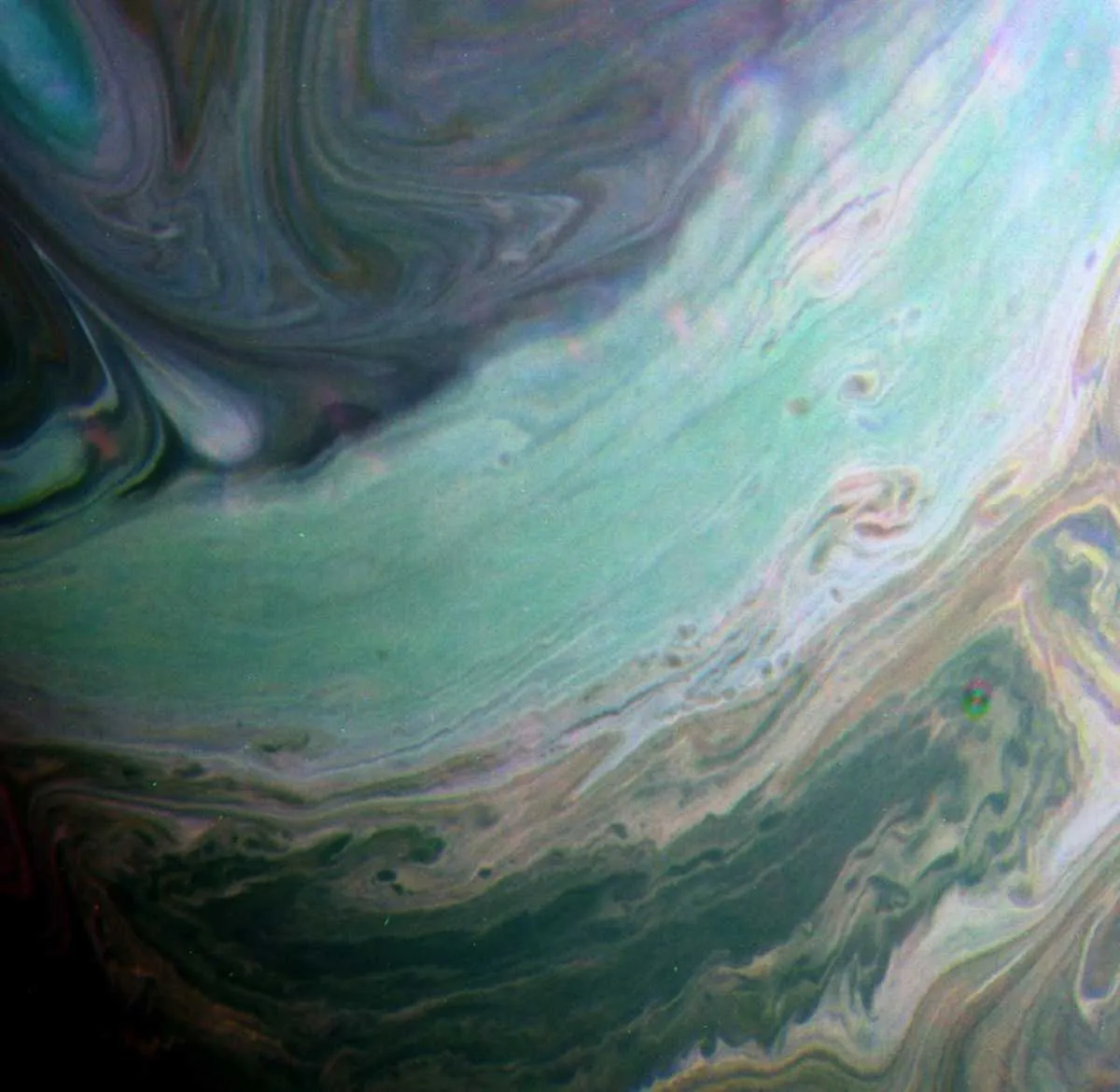
There are 32.7kg of radioactive plutonium fuel on-board Cassini
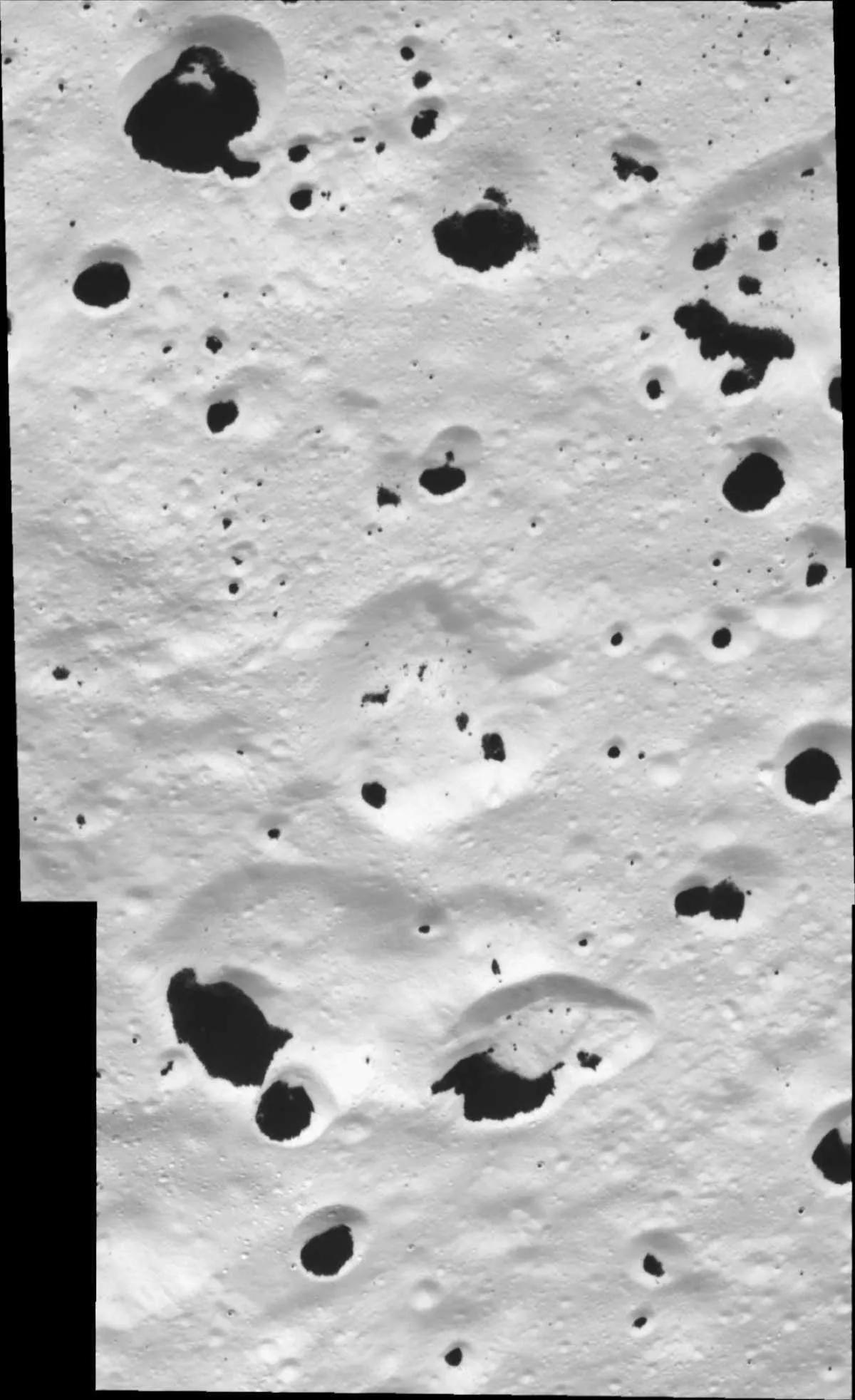
Iapetus' orbit is so wide you would be able to see the rings of Saturn from the surface.
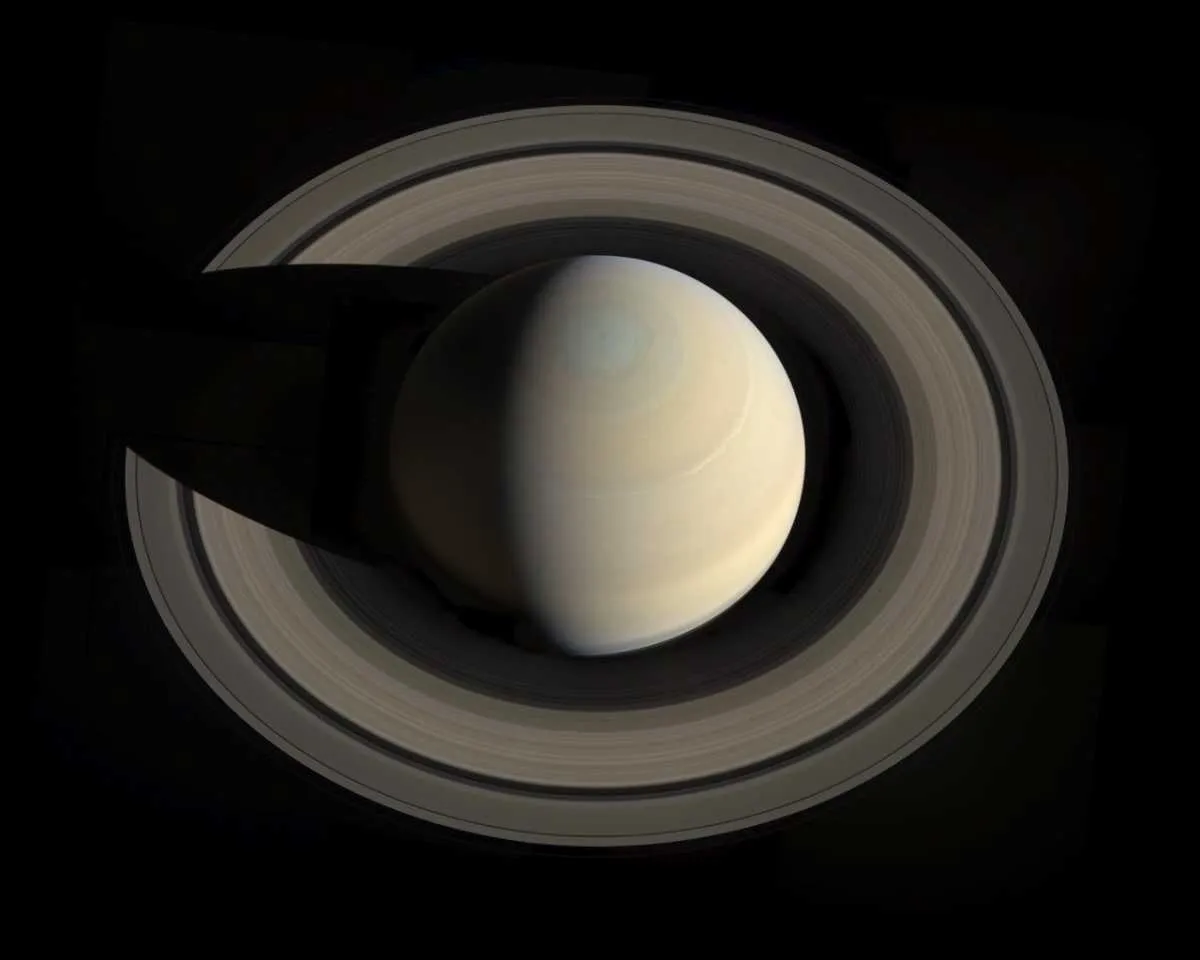
The Cassini spacecraft weighs 2,150kg, around the same astwo walruses.
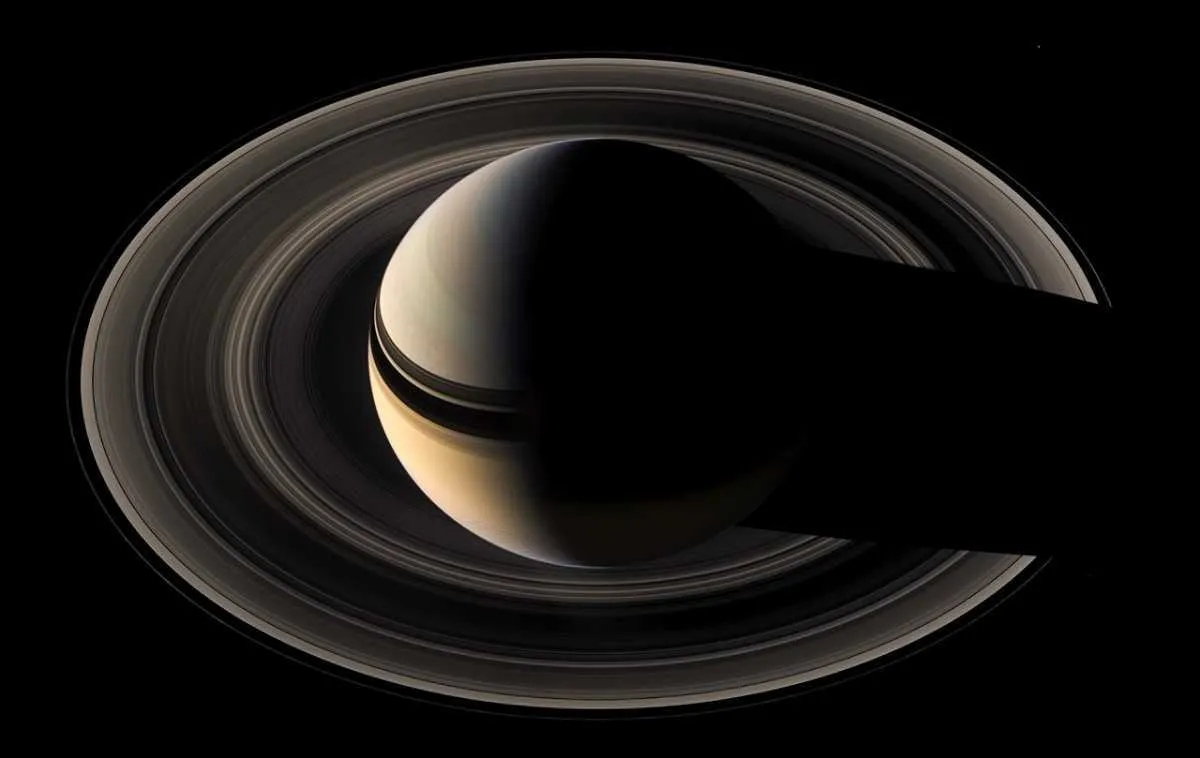
As of July 2017, Cassini has taken some 379,300 images.
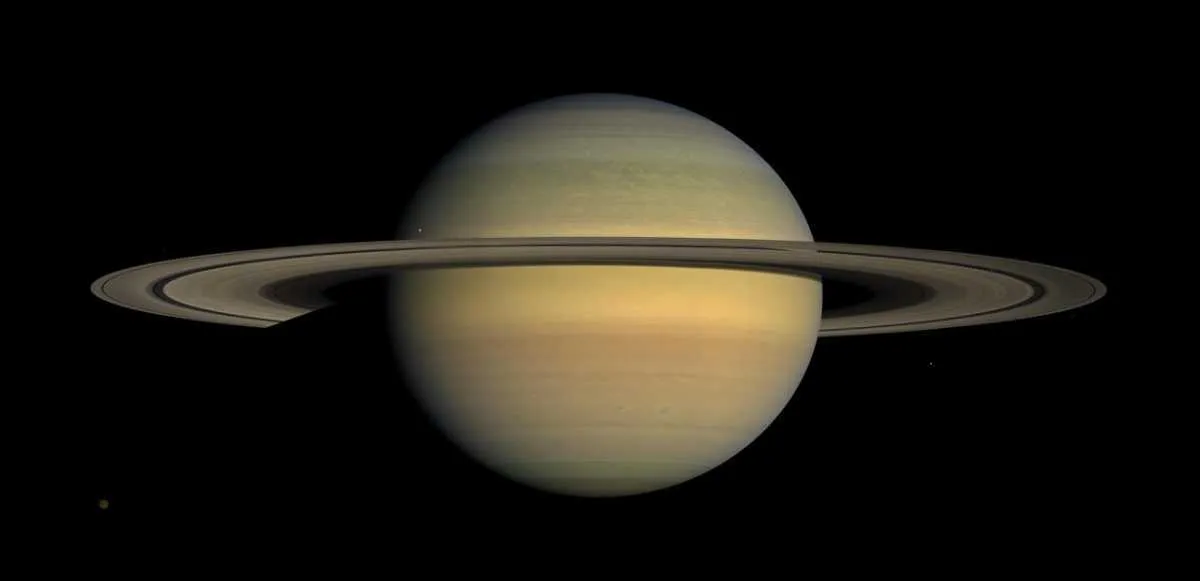
There has been more than 3,600 scientific papers published with Cassini data.
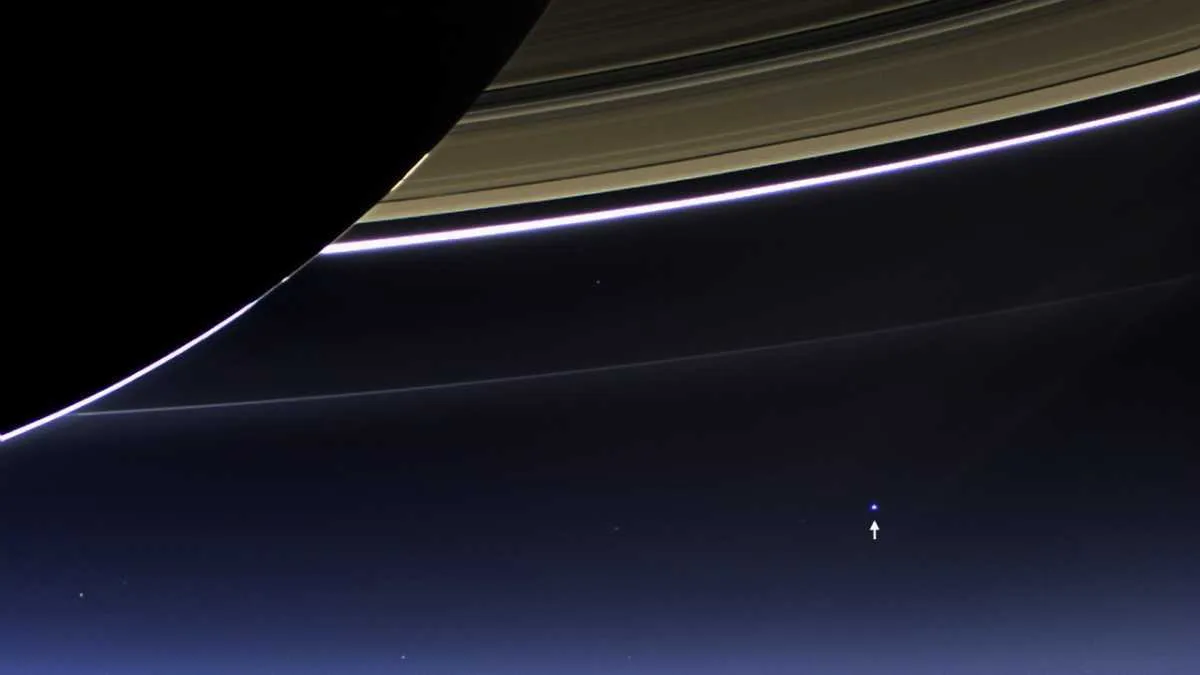
Saturn is the most distant planet in the Solar System that is obviously visible to the human eye from Earth.
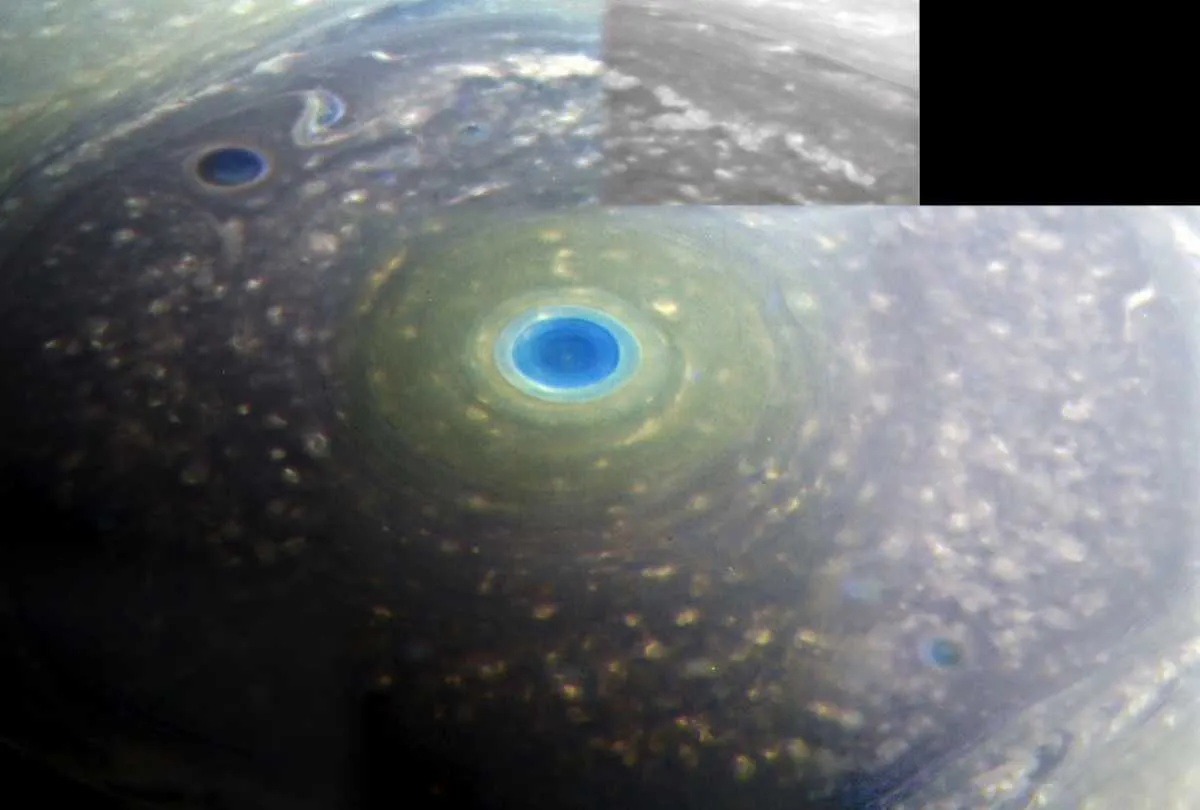
When Cassini begins its death plunge it will be on its 293rd orbit of Saturn.
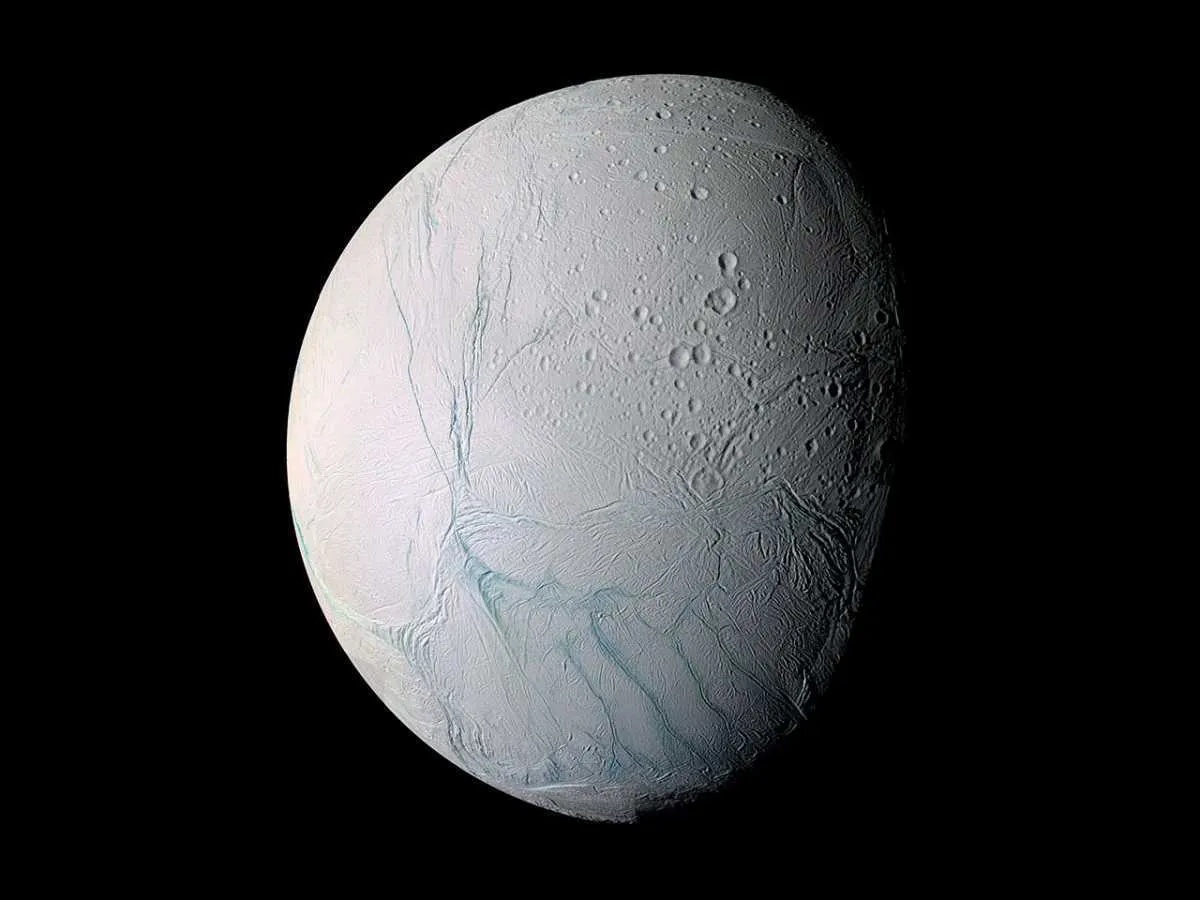
Cassini has been programmed todisintegratein Saturn's atmosphere so that it doesn't crash into its moons and contaminate the surface. This is particularly important for Enceladus, which is our mostpromising candidatefor finding extra-terrestrial life.
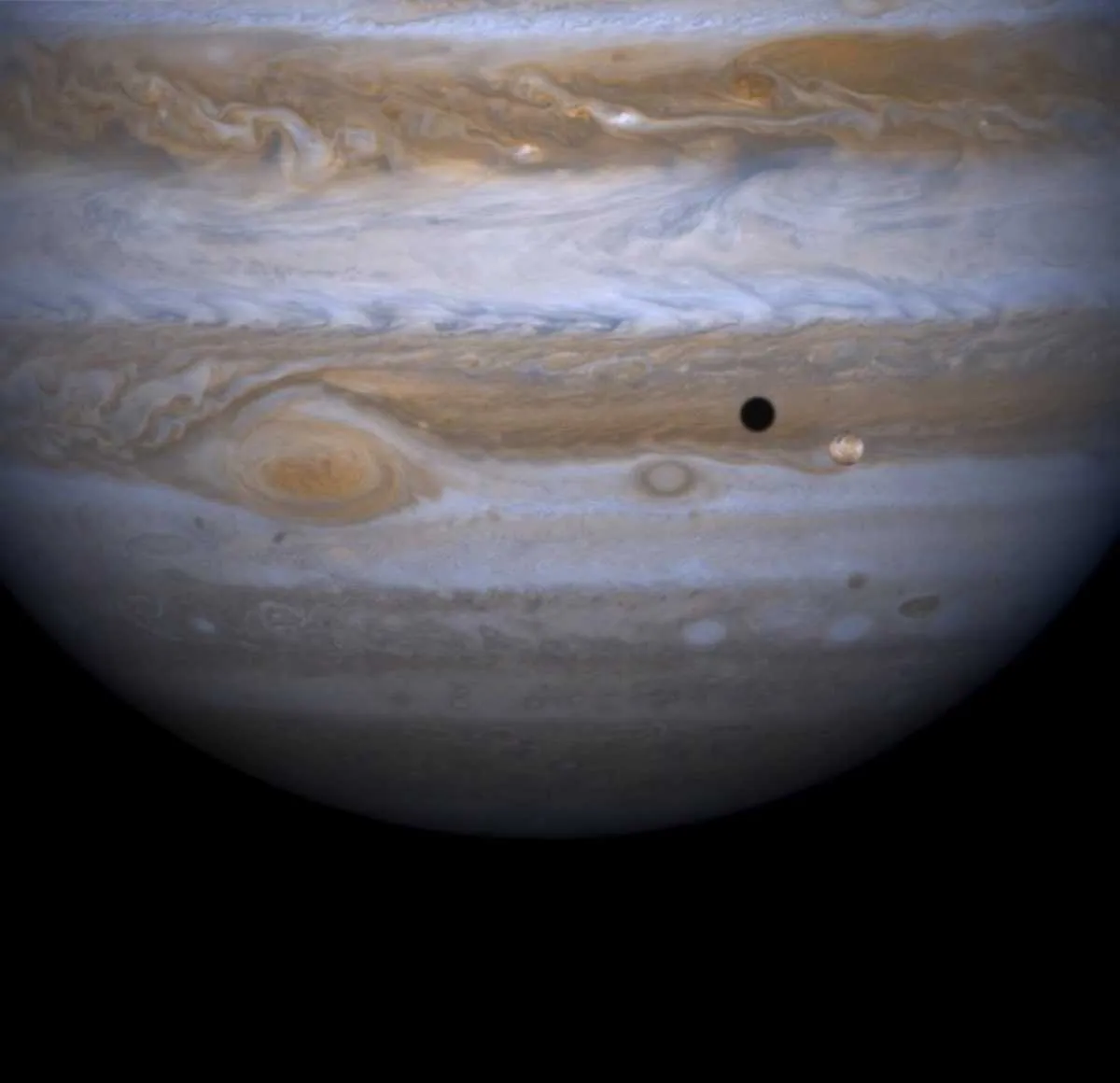
In 2000 Cassini made a flyby of Jupiter for course correction and acceleration.

Saturns rings measure 273,000km across, yet are only 20km thick.
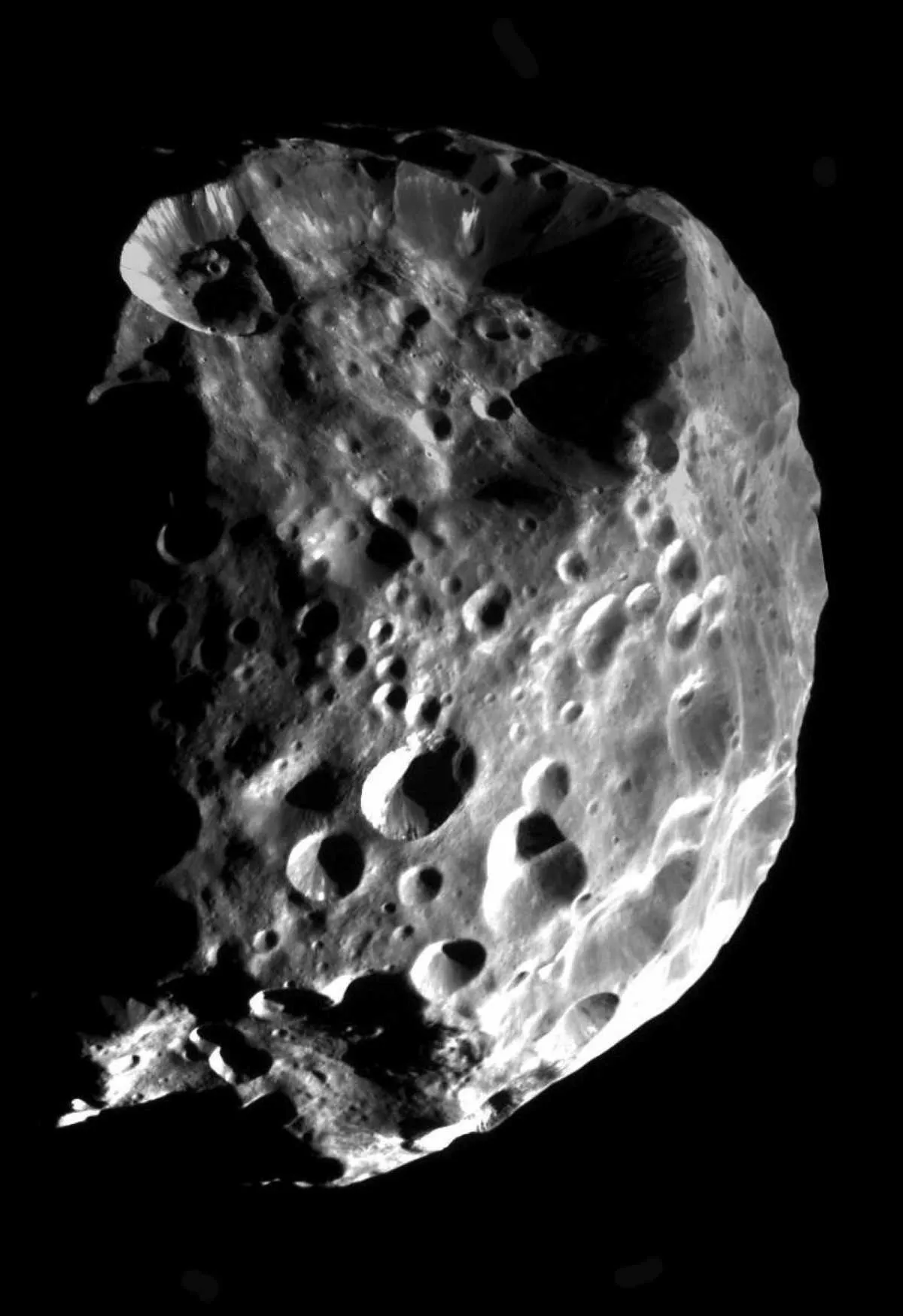
Phoebe is only 200km across and its low density means ice is a major constituent.
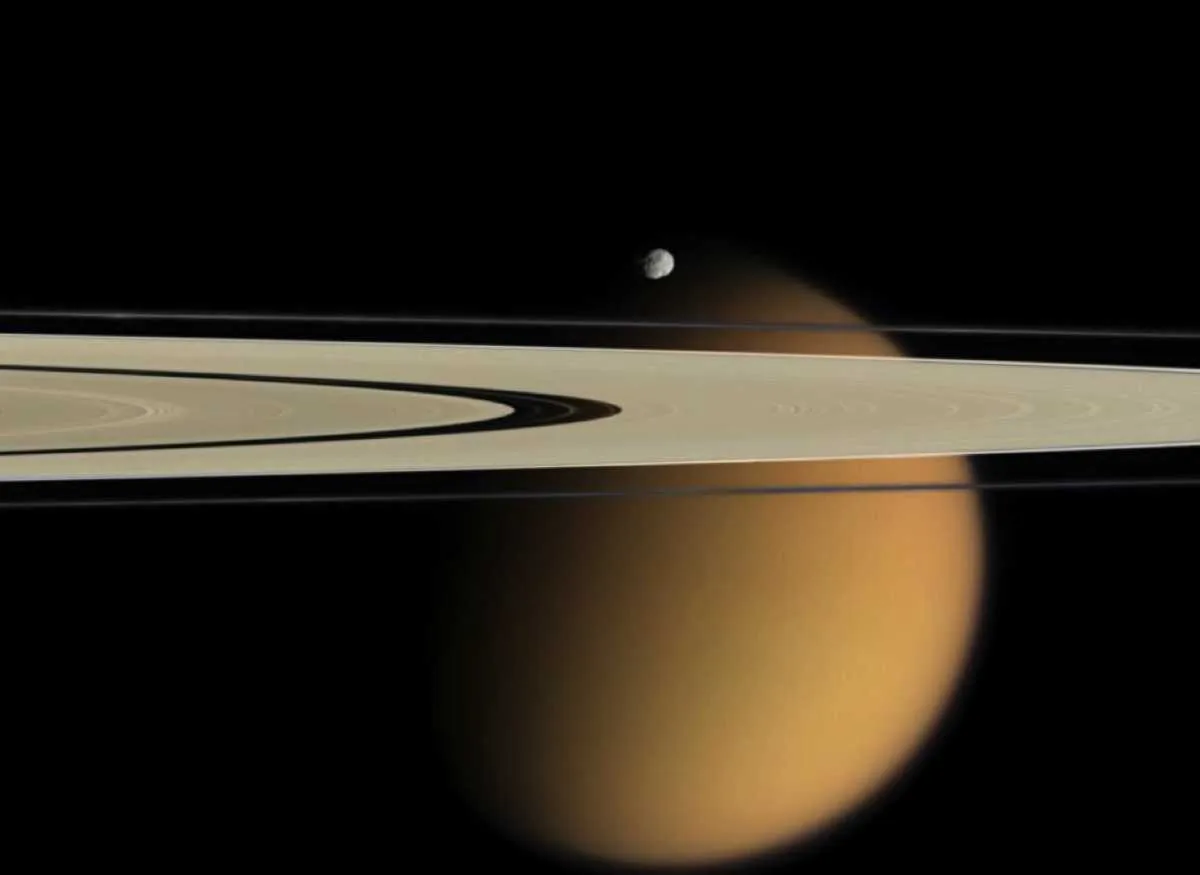
Cassini has discovered 10 new moons around Saturn, with six confirmed, three provisional and one that potentiallytemporary.
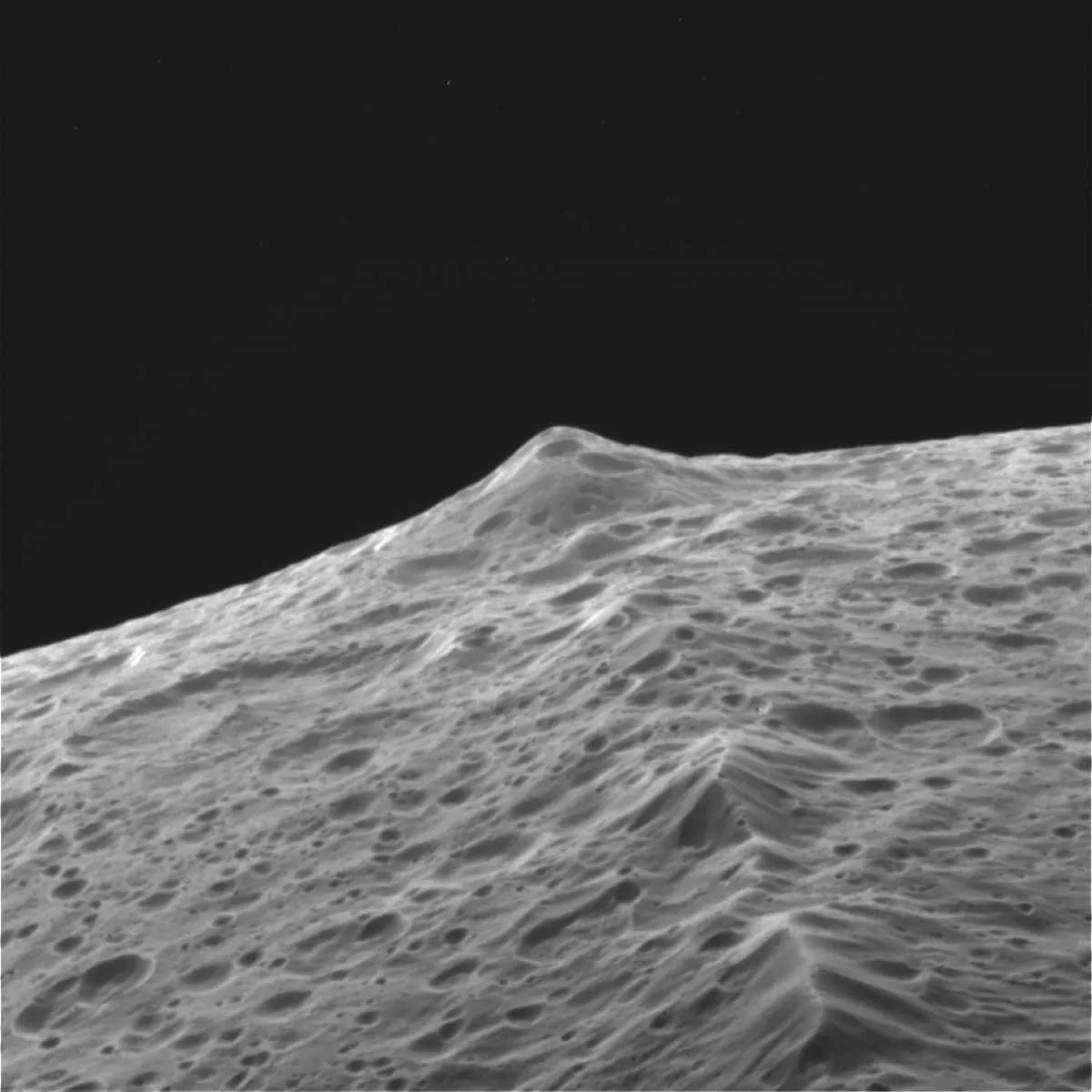
This mountain range exactly over the equator of Iapetus is 20km high and was probably formed from debris from Saturn's ring system.
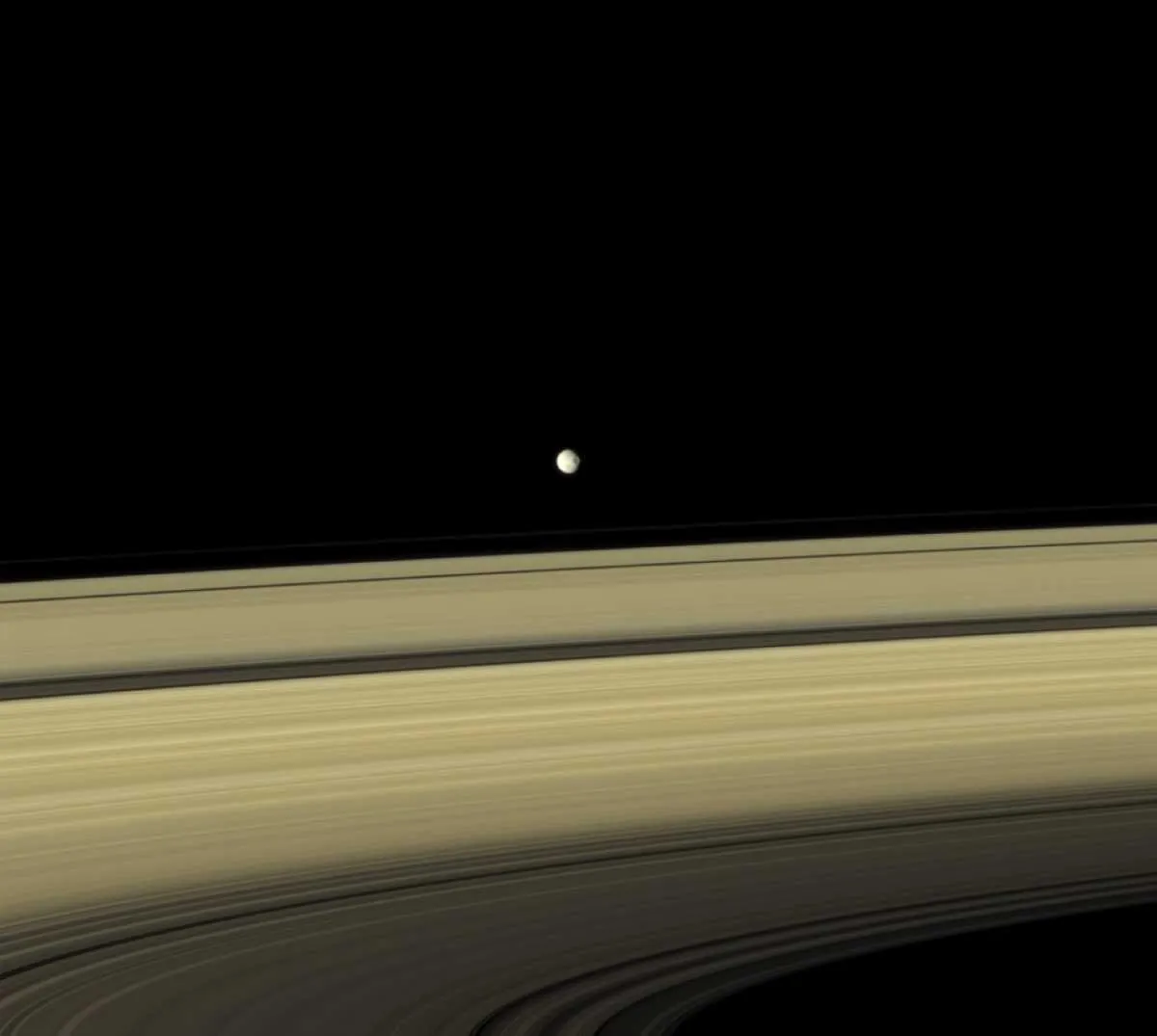
Mimas has a large crater named after William Herschel, who discovered the moon in 1789 - it lookseerily like the Death Starfrom Star Wars.
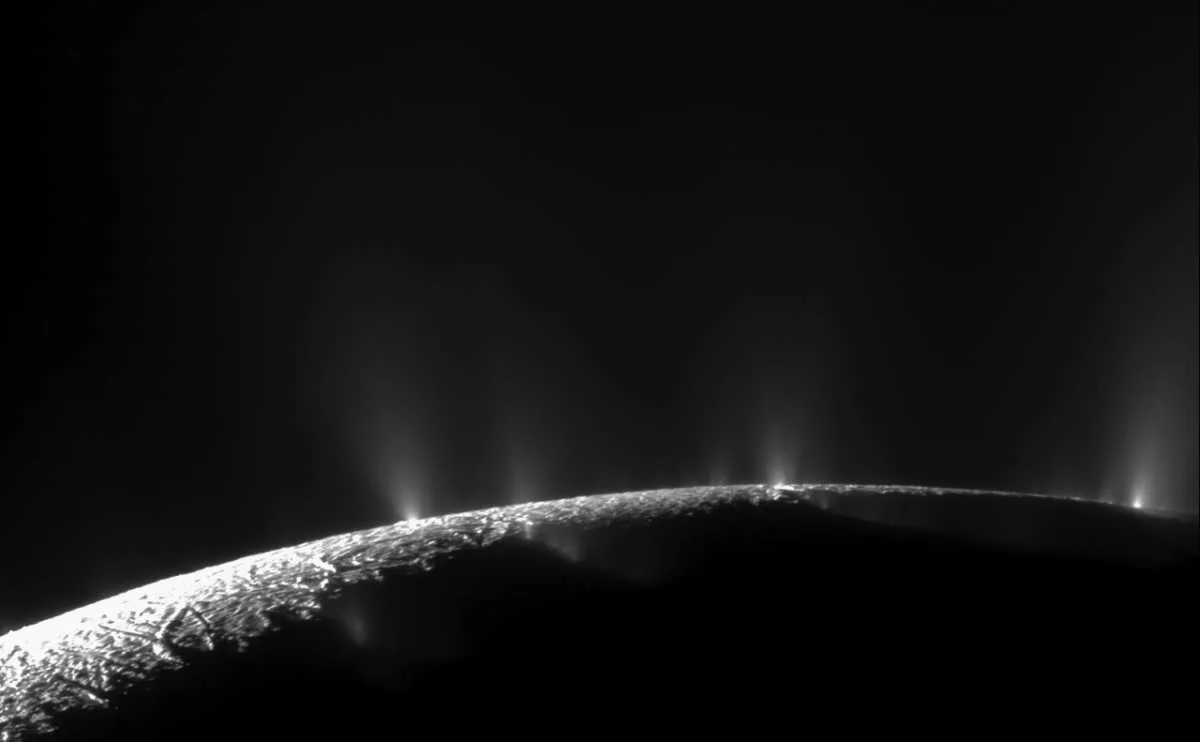
The spacecraft's top speed was 122,900 km/h.
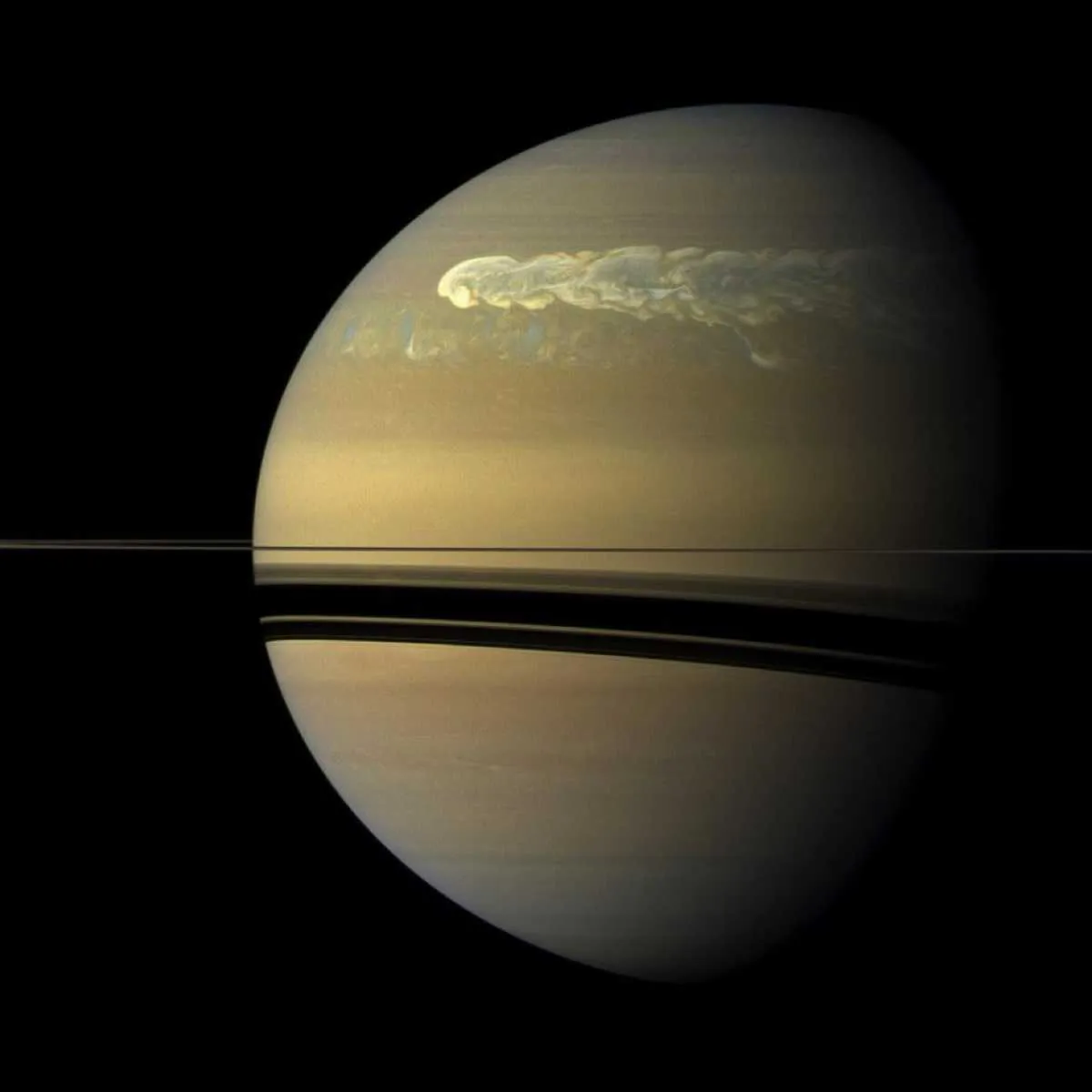
Storms like this in the northern hemisphere of the planet occur every 30 years.

Cassini was in the shadow of Saturn when it took this photo. Mars, Venus, Earth and the Moon can all be seen around the edge of the planet, and the outer purple band is formed from dust and ice particles from the geysers ofEnceladus.
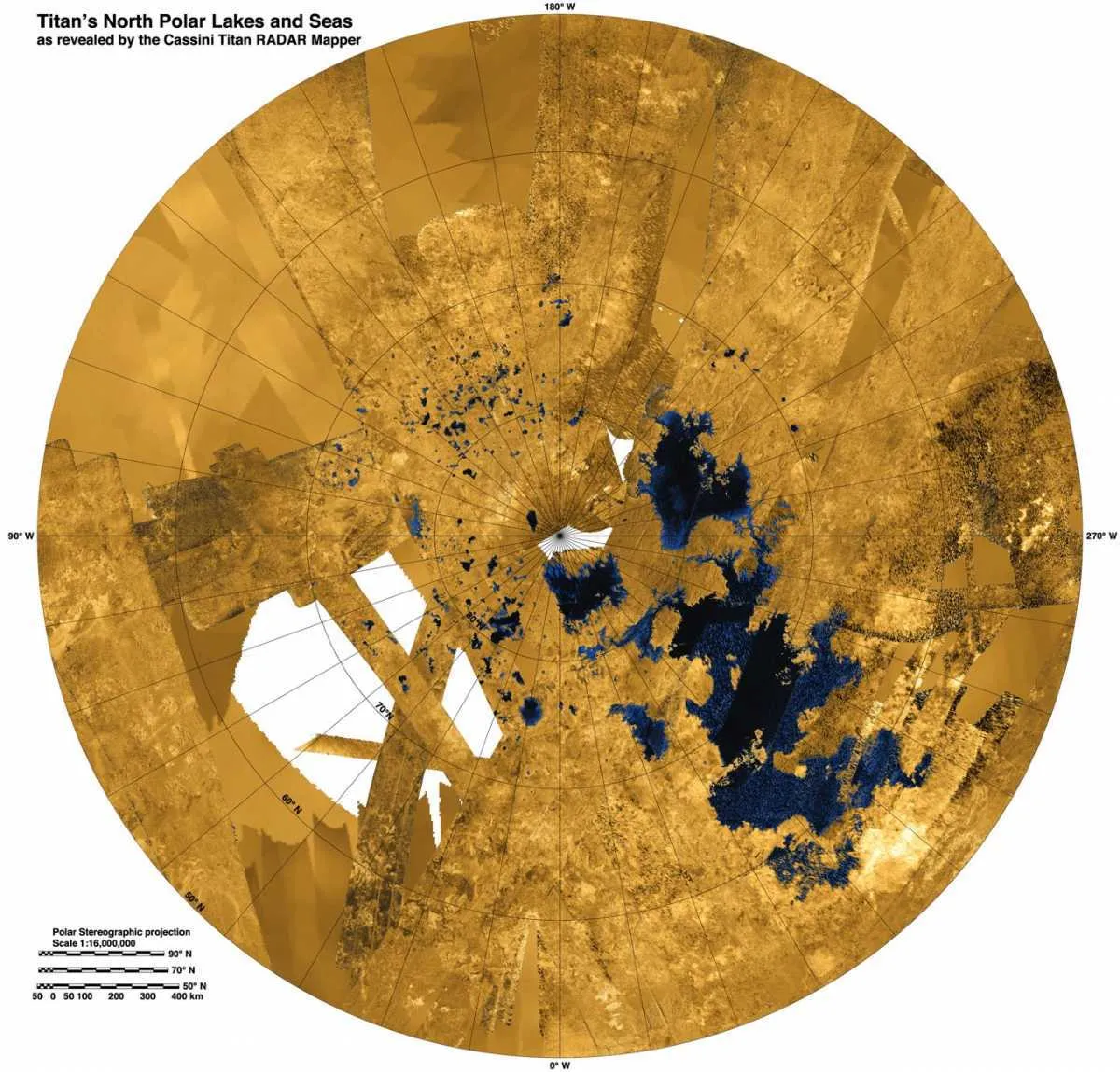
The dark areas on the surface of Saturnian moon Titan are lakes of liquid ethane and methane.
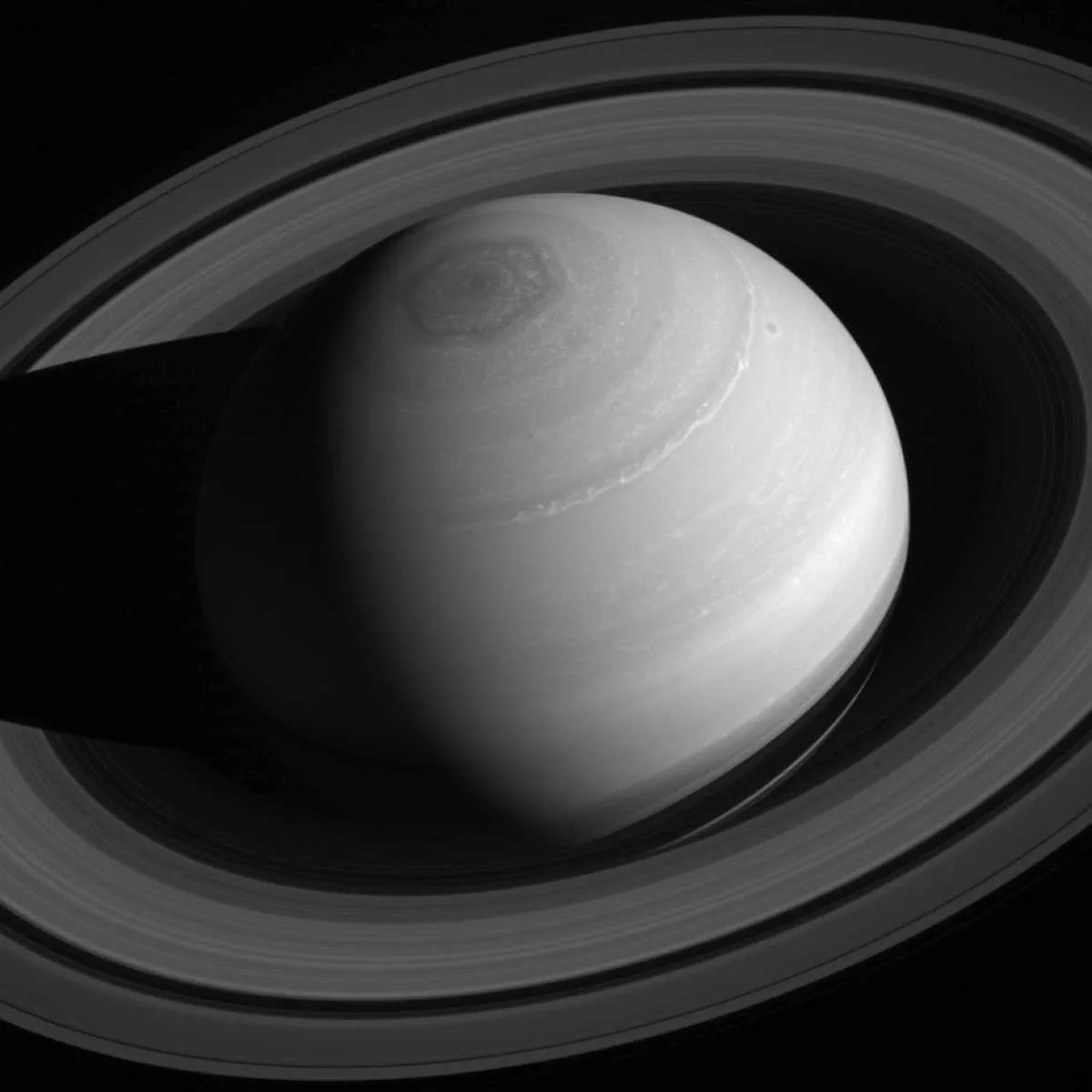
Cassini was launched on 15 October 1997 and arrived in orbit of Saturn on 1 July 2004.
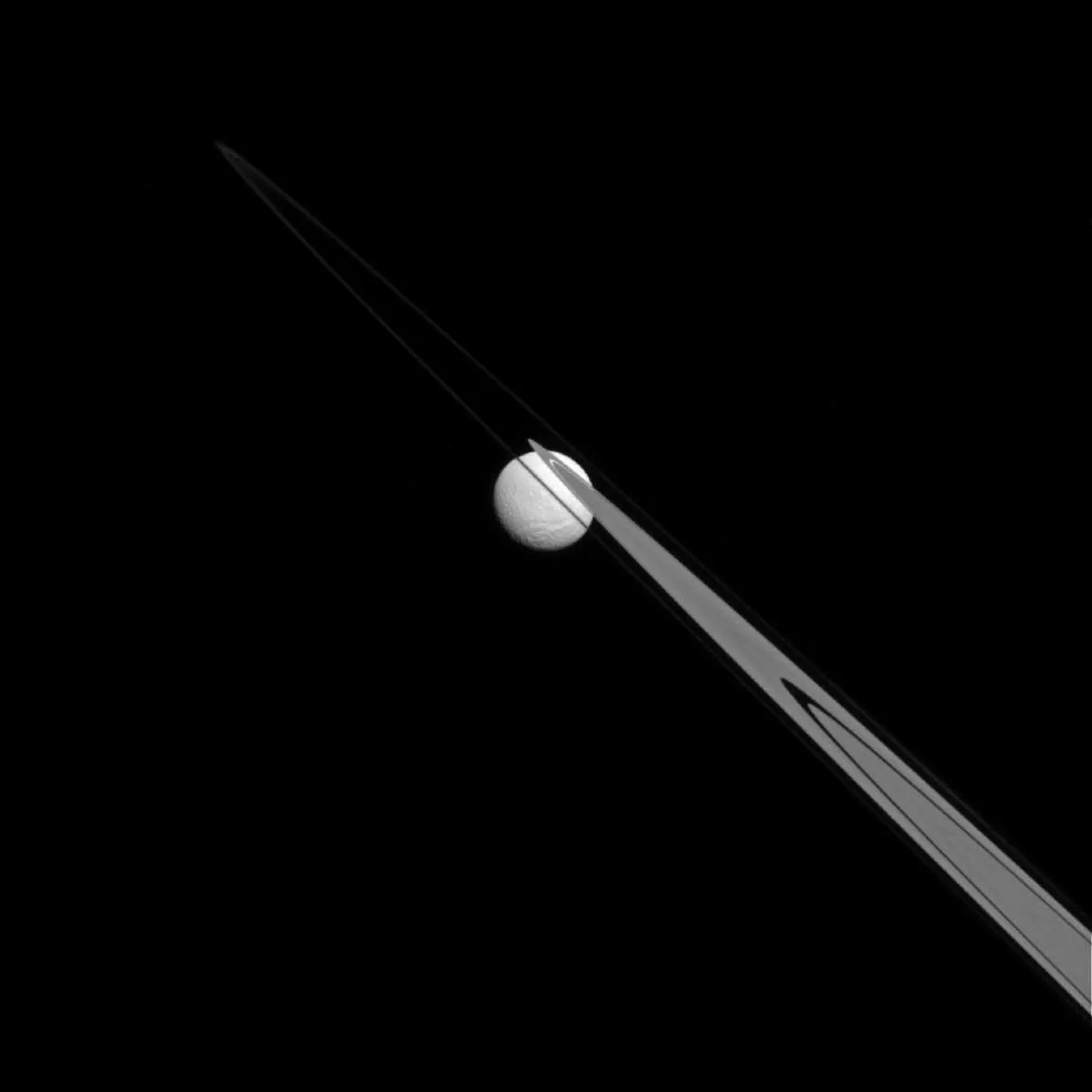
Since April Cassini has been performing daring plunges between the clouds and rings ofSaturn, with the hope of being able to weigh the rings. If they prove to be low-massit means they must be relatively new, else they would have eroded away over time.
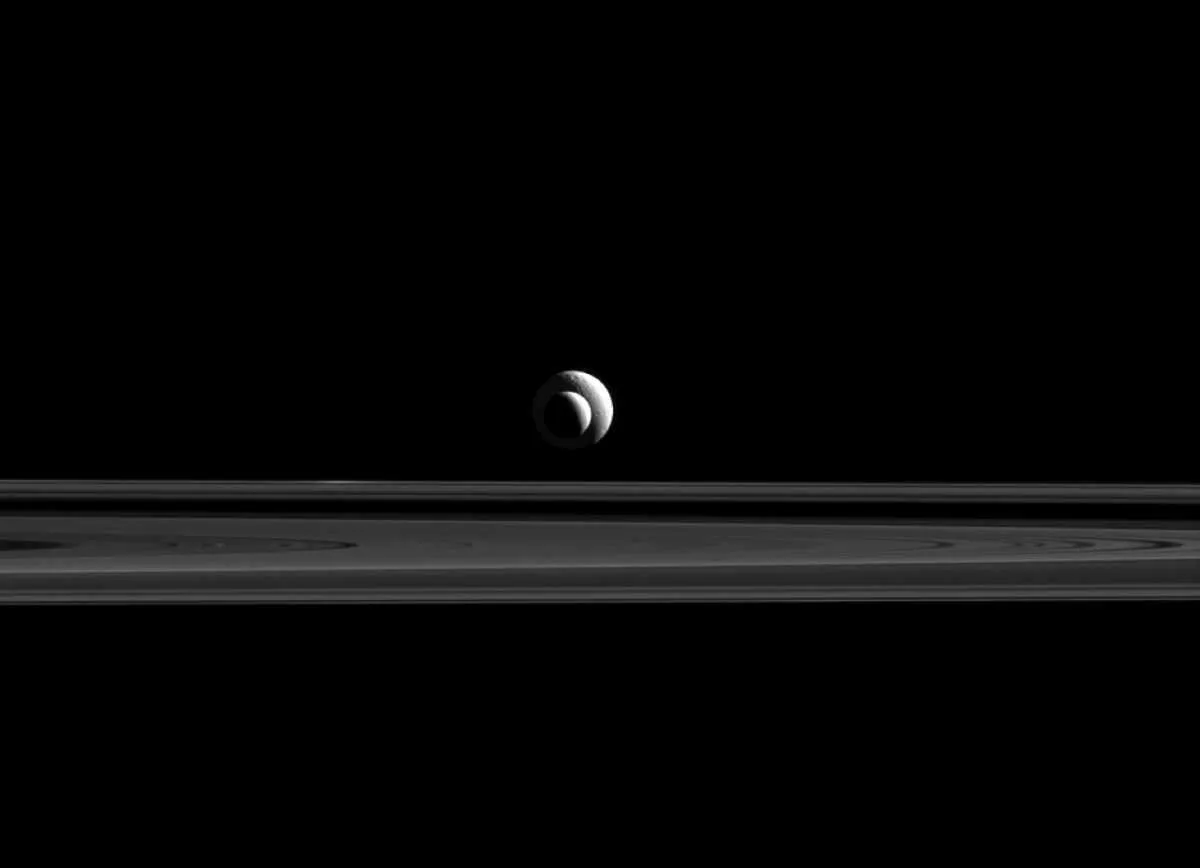
The mission will cost around $3.26bn in total, with the European Space Agencycontributing $500m to the total.
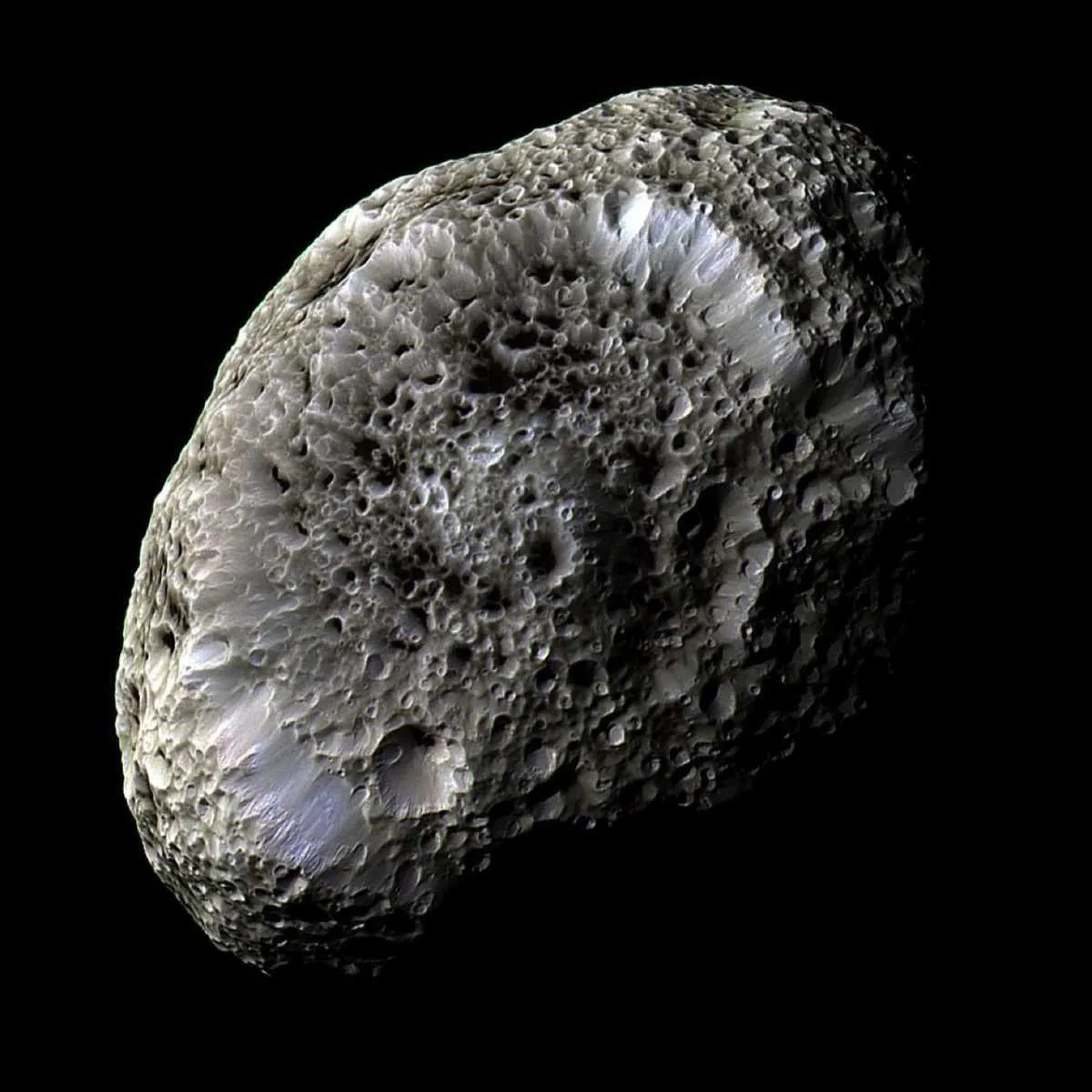
Hyperion is a small moon (360x260x205km)with an chaotic rotation.
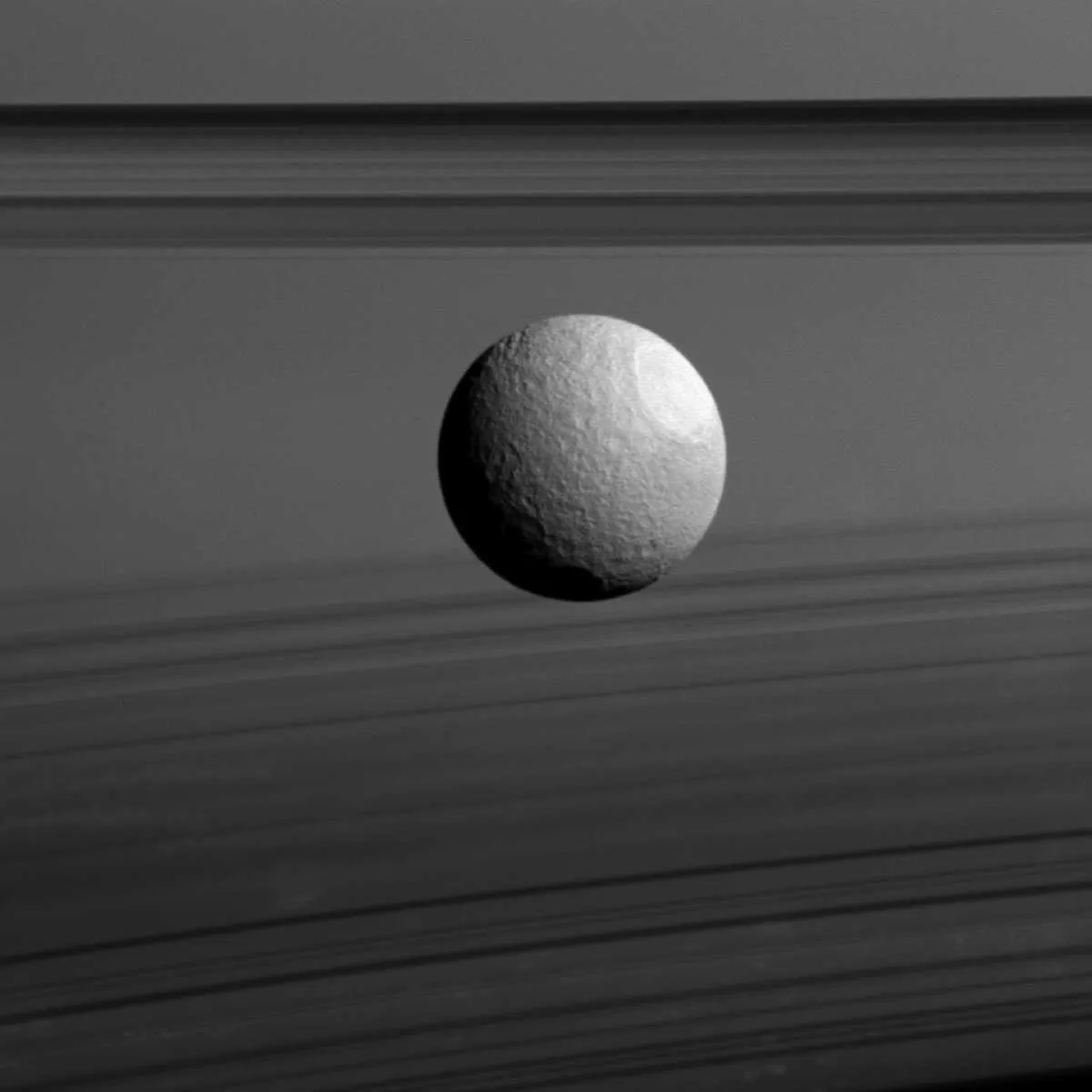
The Cassini spacecraft is named afterItalian-French astronomerGiovanni Domenico Cassini, who discovered Saturn's ring divisions and four of its moons.
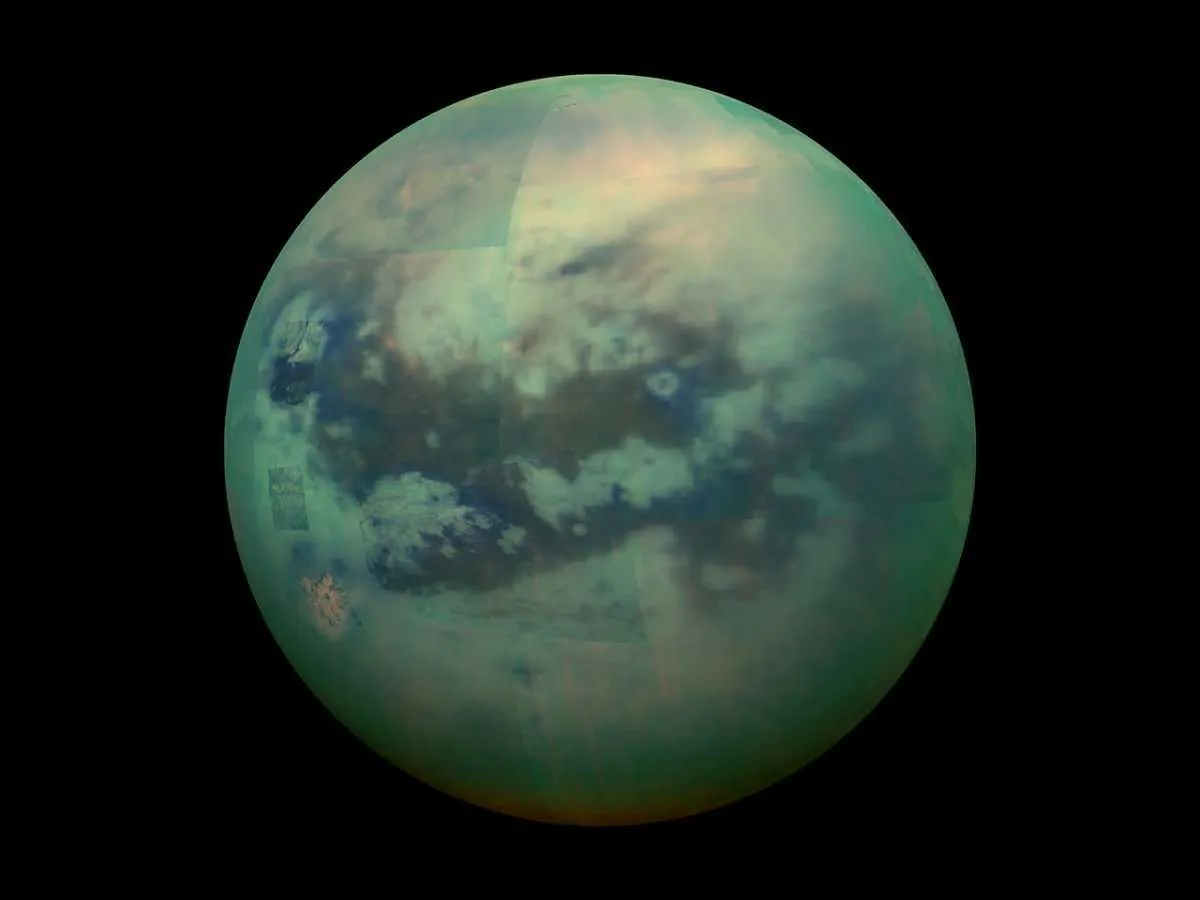
Due to being further from the Sun and at a lower temperature, the clouds form at a deeper level in the atmosphere compared to Jupitermaking them less striking (though still beautiful in our eyes).
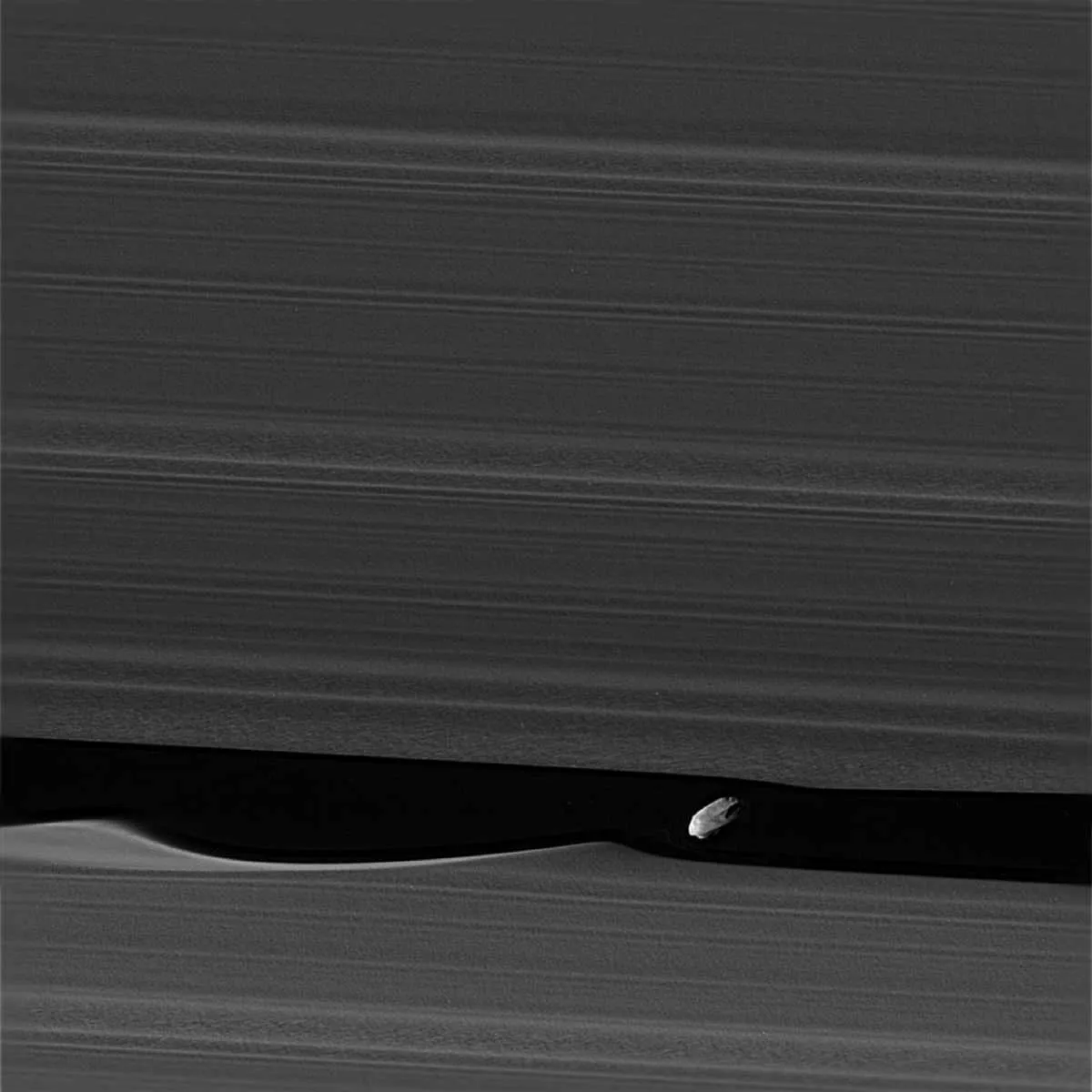
Although on eight kilometreswide, Daphnis creates a gravitational pull on Saturn's rings causing a ripple effects.
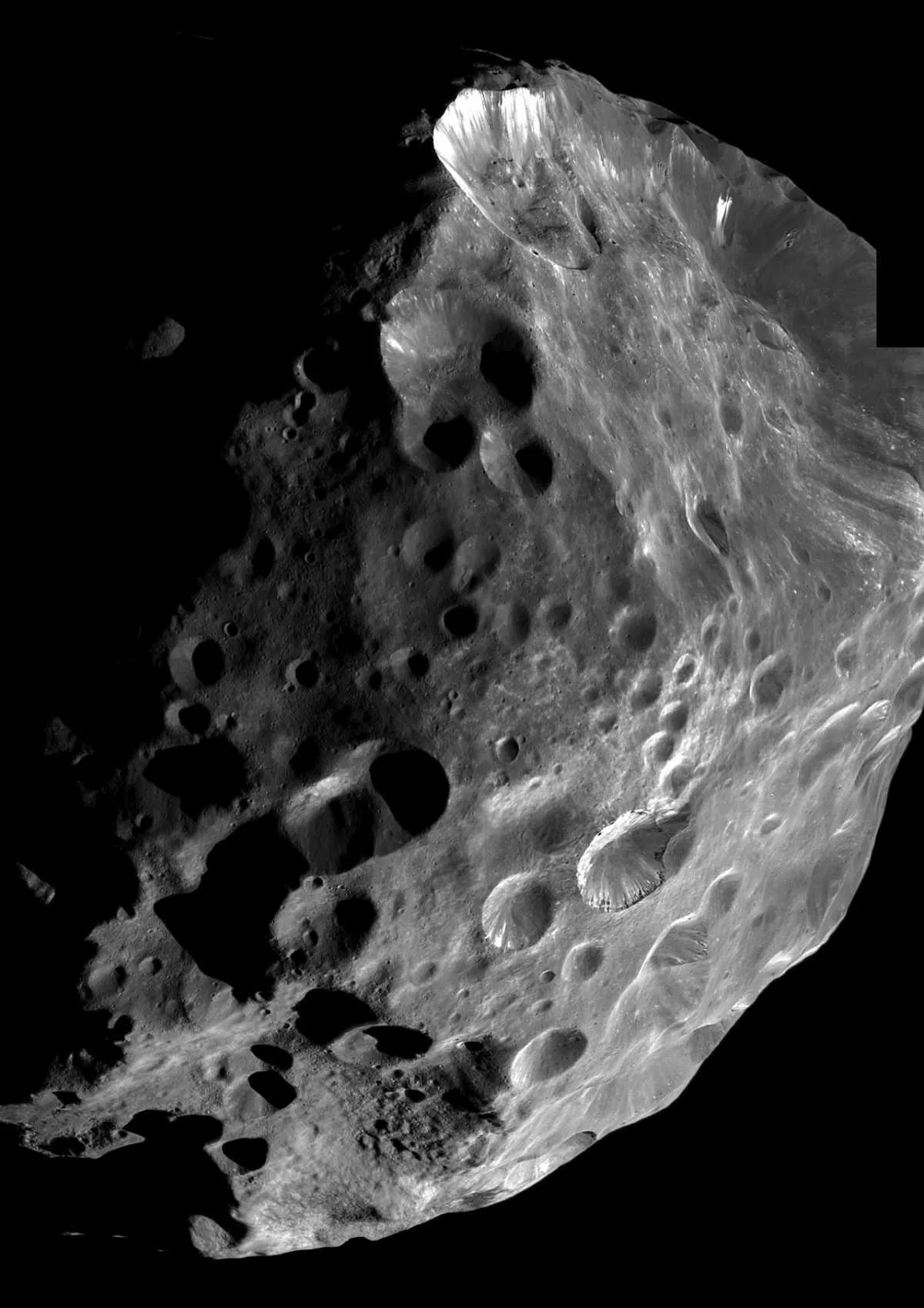
Cassini passed within 12,000km of Phoebe to take this shot, a tiny distance in astronomy.
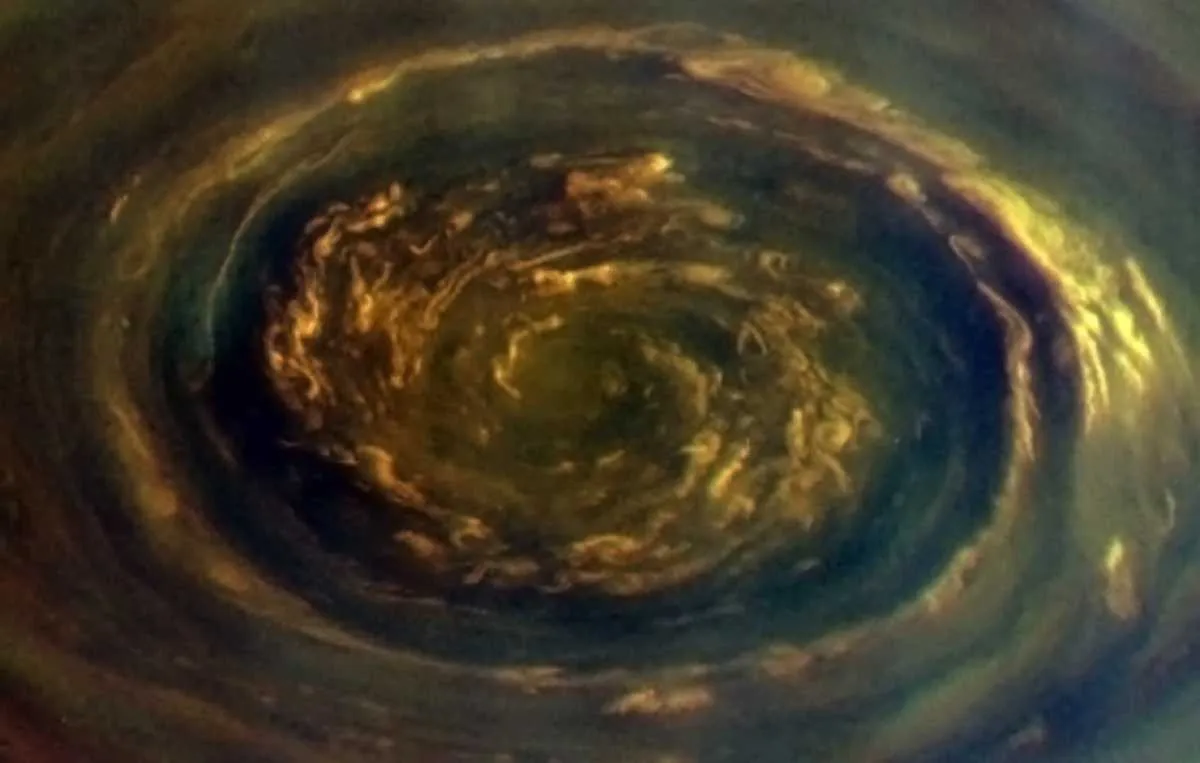
The tumultuous cyclone at Saturn's north pole is 8,000km across with clouds measuring tens of kilometres tall.
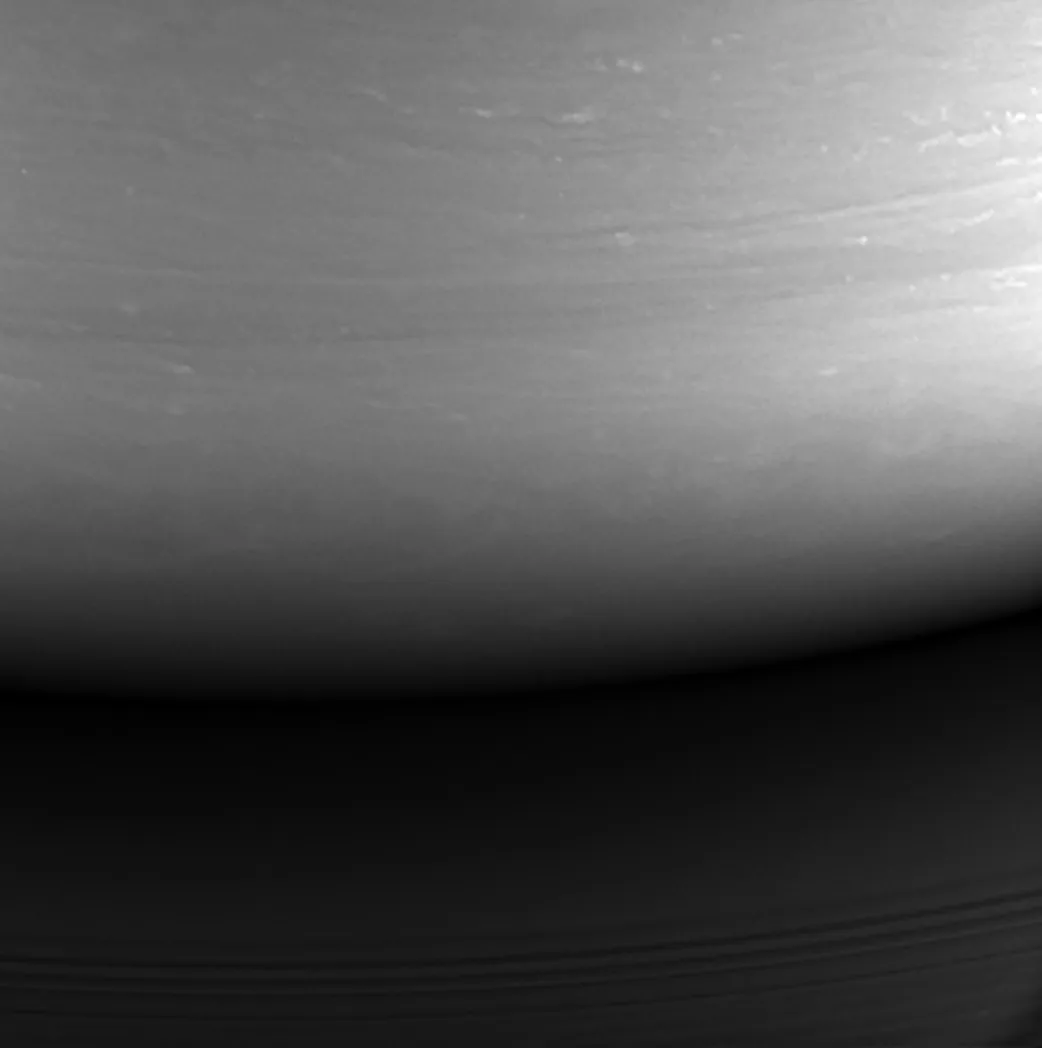
It seems fitting that the final image in this collection should be the last one taken by the Cassini probe as it made its descent into Saturn's atmosphere. Taken on 14 September 2017 at19:59 UTC (spacecraft event time) and at adistance of 634,000 kilometersabove the planet, this photo is the final record of Cassini's 13-year journey.
Discover more about NASA'sCassiniprobe and mission before its final plunge into the planet's atmosphere inCassini’s Last Hurrahfrom issue 310ofBBC Focusmagazine - make sure you don’t miss out on the full article every issue andsubscribe here.